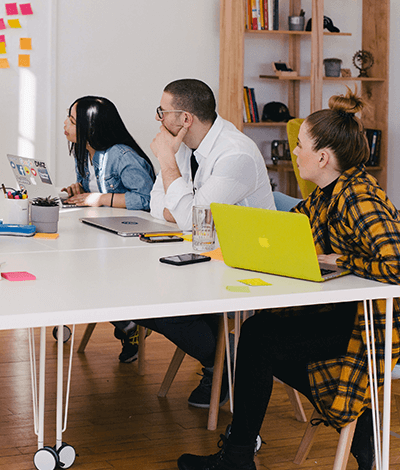The Future of Work: AI and Automation
Explore the synergy of AI and automation and how the power duo is redefining the future of work with increased efficiency and productivity.

There’s no arguing that AI has dominated tech conversations over the last year. With the benefits well-documented, users have rushed to take advantage of AI-powered solutions. Notably, ChatGPT exploded to over 100 million users just two months after its late 2022 launch. Yet, 62% of executives express concern that their company is not moving fast enough with AI.
How can organizations speed up the implementation process and start benefiting from AI-powered solutions? The answer is simple: automation.
When combined with the capabilities of robotic process automation, AI creates a powerful impact. In turn, RPA can expedite AI implementation and start taking advantage of AI-powered solutions.
Keep reading to discover the synergistic power of AI and automation in shaping the future of work.
AI vs. Automation: What’s the Difference?
While the two technologies are distinct, they are also complementary. Automation uses technology to perform repetitive or mundane tasks without human intervention. On the other hand, AI mimics human intelligence in machines to analyze, learn, and make decisions.
While RPA (robotic process automation) focuses on streamlining repetitive processes, AI goes a step further by interpreting data, recognizing patterns, and making decisions. In other words, automation is about efficiency and productivity, while AI is about cognitive capabilities and problem-solving.
AI and Automation in Action
While AI can generate valuable insights and predictions, it’s RPA that turns those insights into action. With AI capabilities, bots can adapt to changing circumstances, make data-driven decisions, and optimize processes.
Integrating AI opens new avenues for RPA, enhancing flexibility and intelligence in task performance. In turn, RPA offers benefits for AI through the ability to learn, adapt, and perform tasks.
Together, RPA and AI enable businesses to achieve higher levels of efficiency, accuracy, and scalability. In fact, a study by Bain & Company confirms that 45% of respondents believe the power duo will spur major transformations in the future.
How Does AI and Automation Affect Jobs?
While AI enables RPA to achieve decision making and analysis, it does not entirely replace human jobs. Rather, the power duo is redefining work dynamics, and creating new opportunities for collaboration and innovation. In fact, according to research conducted by Harvard Business Review, significant performance improvements happen when humans collaborate with machines.
To maximize the potential of AI and automation, collaboration between CIOs and HR is essential. Part of that includes:
- Integrating AI and automation into the talent strategyR
- Recruiting for new capabilities
- Redesigning business processes to support the partnership of RPA and AI
- Upskilling existing teams
Unlocking New Opportunities with AI and RPA
By integrating AI capabilities into RPA, businesses can automate even more complex tasks that require problem solving. AI-powered automation can help streamline tasks bogged down by data, verification, and analysis such as:
- Invoice processing
- Email management
- Claims processing
- Prediction validation
- And more!
Check out more use cases of AI-powered RPA here.
AI and RPA: Future-Forward Integration
The flexibility of AI, coupled with automation’s ability to eliminate repetitive tasks, empowers human talent to concentrate on more strategic initiatives. The synergy these technologies propel businesses toward remarkable efficiency, productivity, and success.
The future of work lies in the seamless integration of RPA with AI. By applying AI with automation, organizations aren’t just preparing for an AI-first world. They’re actively shaping it.
Unlock the potential of automation and AI with Neostella’s cost-friendly Consumption-Based RPA. Pay only for what you use!
